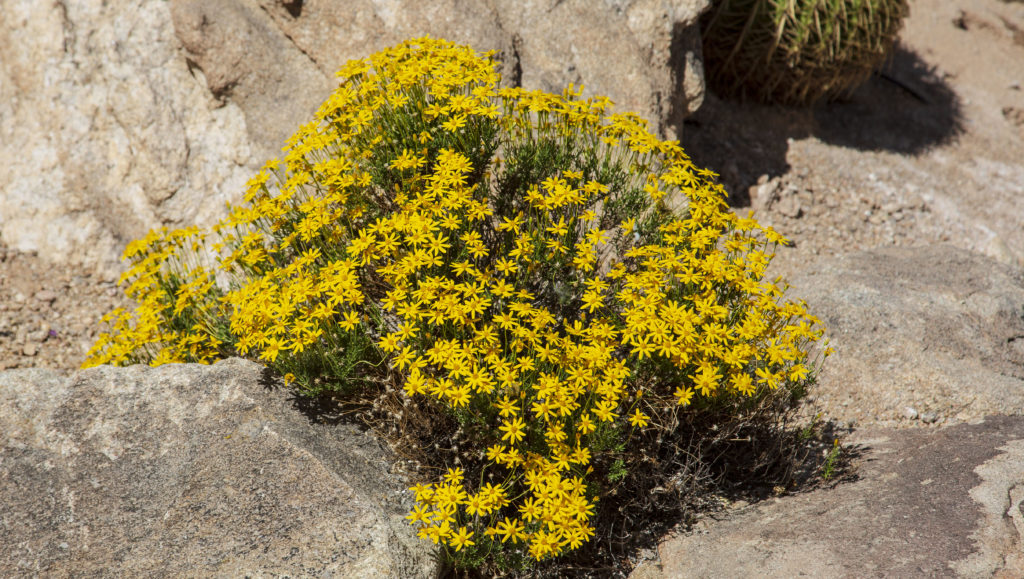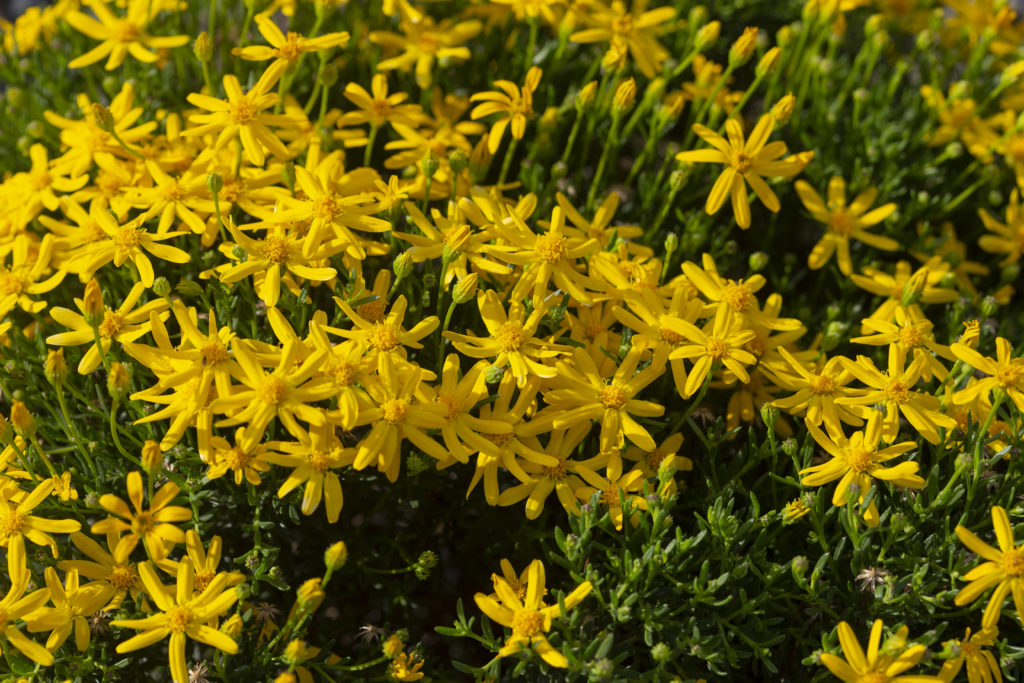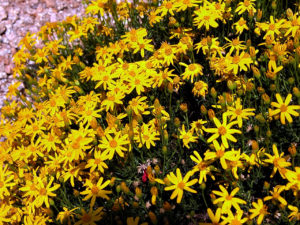This month, our plant of the month blog features a plant description from a newly revised book, Cool Plants for Hot Gardens by Greg Starr! In his book, Greg features 150 water-smart choices for the Southwest – it’s no wonder why we like the book so much here at Water – Use It Wisely! He includes a fun category of the “Etymology” or the origin of the scientific name, as well as “Field Notes” he has taken (and somehow kept track of) that describe where he found or has observed the plants growing in habitat.
Damianita, Chrysactinia mexicana
AT-A-GLANCE
Attracts bees, butterflies.
|
Etymology
American botanist Asa Gray chose to honor Mexico, the country where the original collection was made, when naming this species.
Field Notes
You should be able to see Chrysactinia mexicana in several easy-to-get-to places in the Wild West. Try taking in the beautiful scenery on the hike to El Capitan in Guadalupe Mountains National Park and look for some of these shrubs along the way. The drive along Texas State Highway 118 south of Alpine takes you through some awesome country where plants can be seen in the hills about 6-7 miles from Alpine. Look for them growing in southeastern New Mexico, western Texas, and eastern Mexico in canyons and on rocky slopes primarily on limestone from 1,000-7,000 feet elevation.
Description
Narrow dark green leaves and a showy flower display combine to make this a highly ornamental small shrub that grows to 1-2 feet tall by 1-2 feet across. The needle-like leaves are slightly aromatic and provide an ideal backdrop for the brilliant yellow flowers that top the hemispherical shrub. Flowers appear from spring to fall and draw in bees and butterflies by the score.

Culture
Shrubs are very cold-hardy, tolerating winter lows to 0°F without damage, and are ideal for use in the USDA zones 7a-11. They also tolerate summer highs in triple digits and are perfect for small areas in any southwestern landscape. The plants are moderately fast-growing and should be planted only in full sun and given supplemental water during the warm growing season to keep them dense. You may want to trim off old flower heads and cut back hard if they become leggy and sparse near the base.
Identification
Chrysactinia mexicana usually has a longer flowering season and darker green leaves than the similar-looking Ericameria laricifolia (Turpentine Bush).
Landscape Application
Plants can be used singly as a low-growing flowering shrub or massed for a dramatic flower display. The compact form and tough as nails, nature mean plants are ideal for narrow spaces or small courtyards and the harsh conditions of street plantings or parking lots. Use them close to patios or in sensory gardens where people can be up close to the plants and enjoy the wonderful fragrance of the foliage. Because of the long flowering season, Damianita plants can be used to provide seasonal color in a cactus and succulent garden. Try planting alongside spectacular accent plants, such as: Agave ovatifolia, Agave parryi, Dasylirion acrotrichum, Hesperaloe funifera, Yucca rigida, and Yucca rostrata. These play well with the gray leaved, small-to-medium size shrubs with colorful flowers, such as Dalea pulchra, Eremophila hygrophana, and Leucophyllum candidum.
Precautions
There are no insects, pests or diseases that bother Chrysactinia mexicana.
~ ~ ~ ~ ~ ~ ~ ~ ~ ~ ~ ~ ~ ~ ~ ~ ~ ~ ~ ~ ~ ~ ~ ~ ~
Did you know that up to 70 percent of water use is outdoors? That’s why we love desert plants and feature them each month. It’s still a great time to plant non-tropical plants in your landscape, and you can learn more about Damianita and other plants on our Arizona Low-Water-Use Plants page. Visit our page on Choosing and Planting Low Water-Use Plants for tips on plant selection and how to plant properly. Also, be sure to read through all of our featured Plant of the Month blogs!
Water – Use It Wisely is proud to feature guest bloggers who write about topics related to water and water conservation. Greg Starr is a horticulturist and the owner/manager of Starr Nursery located in Tucson, AZ. It is a mail order nursery where you can shop online. Greg has traveled extensively in Mexico and the southwestern United States to study native plants for their potential landscape use in desert regions of the world. In 2009, Greg entered the world of literature as an author with the publication Cool Plants for Hot Gardens. This book was revamped and revised in its second edition published in December of 2021. The book is available online.



